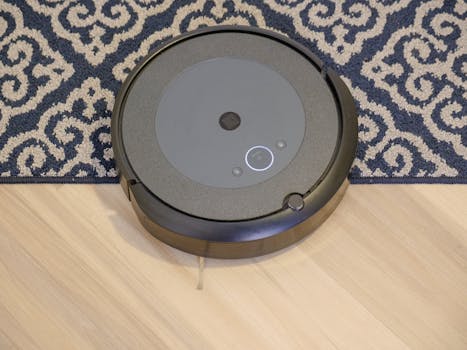
Smart Homes and Smart Living: The Technological Transformation of European Homes by 2025
Smart Homes and Smart Living are revolutionizing the way we live in European homes. With the latest technological advancements and innovations, homes are becoming more efficient, convenient, and sustainable. In this article, we will explore the current state of smart homes and smart living in Europe and what we can expect by 2025.
Introduction to Smart Homes and Smart Living
Smart homes and smart living refer to the integration of technology and automation in homes to make them more comfortable, secure, and energy-efficient. This includes features such as voice-controlled assistants, smart thermostats, and automated lighting systems. The concept of smart homes and smart living has been around for several years, but it has gained significant traction in recent years due to advancements in technology and the increasing demand for sustainable living.
Current State of Smart Homes and Smart Living in Europe
Europe is at the forefront of the smart home and smart living revolution. According to a report by the European Commission, the smart home market in Europe is expected to grow from €15 billion in 2020 to €35 billion by 2025. This growth is driven by the increasing adoption of smart home devices, such as smart speakers, smart thermostats, and security cameras.
Technological Advancements in Smart Homes and Smart Living
Several technological advancements are driving the growth of smart homes and smart living in Europe. Some of the key advancements include:
- Artificial Intelligence (AI): AI is being used to develop intelligent home automation systems that can learn and adapt to the habits and preferences of occupants.
- Internet of Things (IoT): IoT is enabling the connection of various devices and sensors in the home, allowing for seamless communication and automation.
- 5G Networks: The rollout of 5G networks is providing faster and more reliable internet connectivity, enabling the widespread adoption of smart home devices.
- Energy Harvesting: Energy harvesting technologies, such as solar and wind power, are becoming increasingly popular, enabling homes to generate their own energy and reduce their reliance on the grid.
Benefits of Smart Homes and Smart Living
Smart homes and smart living offer several benefits, including:
- Energy Efficiency: Smart homes can optimize energy consumption, reducing waste and saving occupants money on their energy bills.
- Convenience: Smart homes can automate various tasks, such as lighting and temperature control, making life easier and more convenient for occupants.
- Security: Smart homes can enhance security, with features such as motion detection and alerts, providing occupants with peace of mind.
- Sustainability: Smart homes can reduce waste and promote sustainable living, with features such as recycling and composting.
Challenges and Limitations of Smart Homes and Smart Living
Despite the benefits of smart homes and smart living, there are several challenges and limitations that need to be addressed. Some of the key challenges include:
- Cost: Smart home devices and systems can be expensive, making them inaccessible to many people.
- Complexity: Smart home systems can be complex, requiring significant technical expertise to install and maintain.
- Security: Smart homes can be vulnerable to cyber-attacks, compromising the security and privacy of occupants.
- Interoperability: Smart home devices and systems from different manufacturers may not be compatible, limiting their functionality and usefulness.
Future of Smart Homes and Smart Living in Europe
By 2025, we can expect significant advancements in smart homes and smart living in Europe. Some of the key trends and developments that are expected to shape the future of smart homes and smart living include:
- Increased Adoption of AI and Machine Learning: AI and machine learning will become more prevalent in smart homes, enabling more intelligent and automated systems.
- Greater Emphasis on Sustainability: Smart homes will become more sustainable, with a greater emphasis on energy efficiency, recycling, and waste reduction.
- More Focus on Security and Privacy: Smart homes will become more secure, with a greater focus on protecting the privacy and security of occupants.
- Increased Interoperability: Smart home devices and systems will become more interoperable, enabling seamless communication and functionality.






